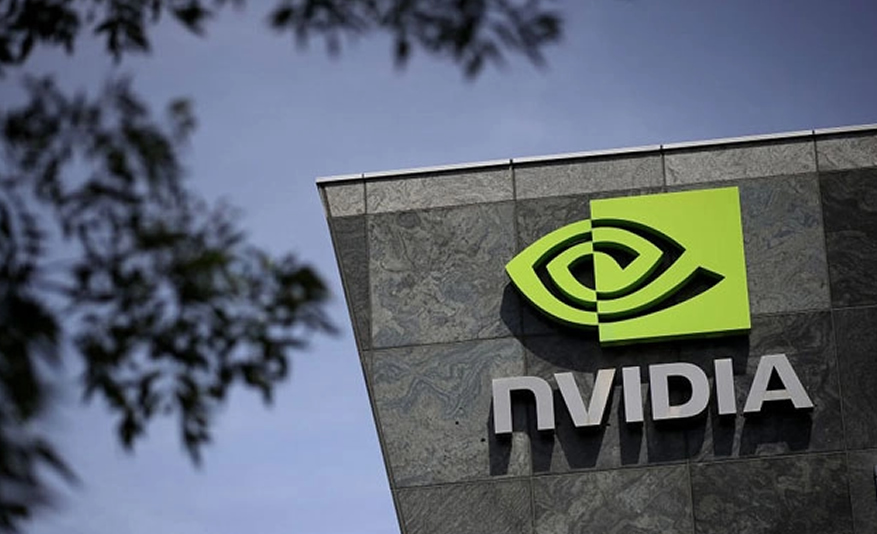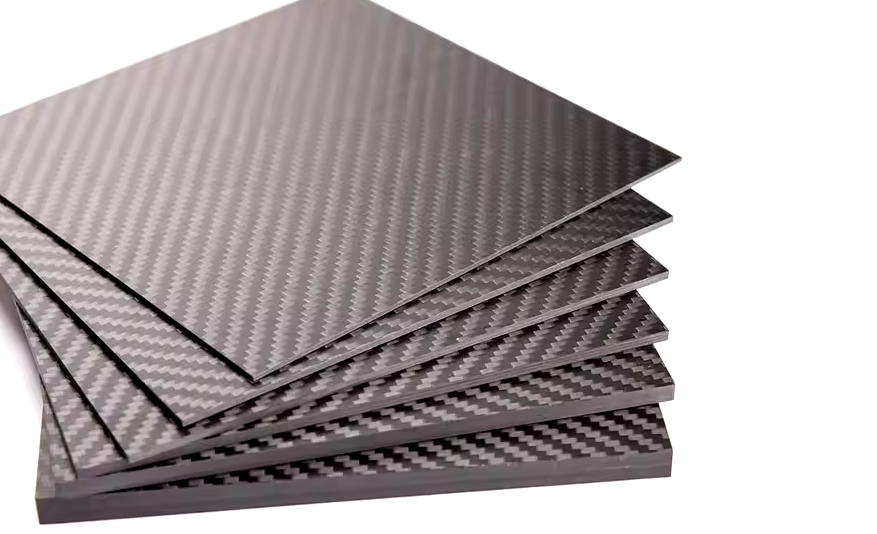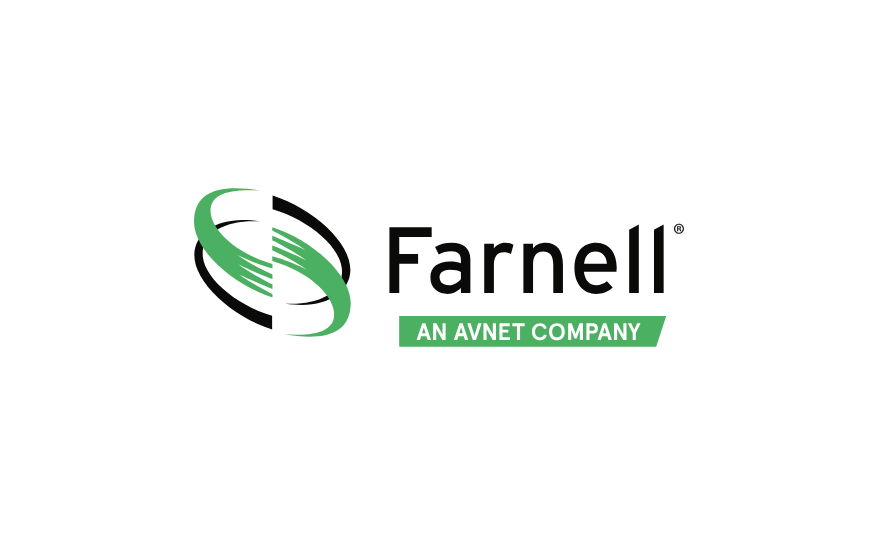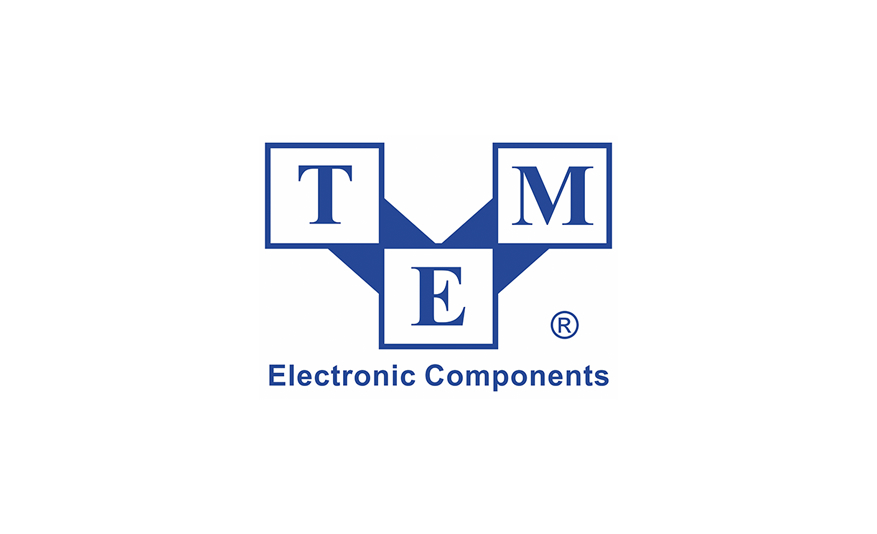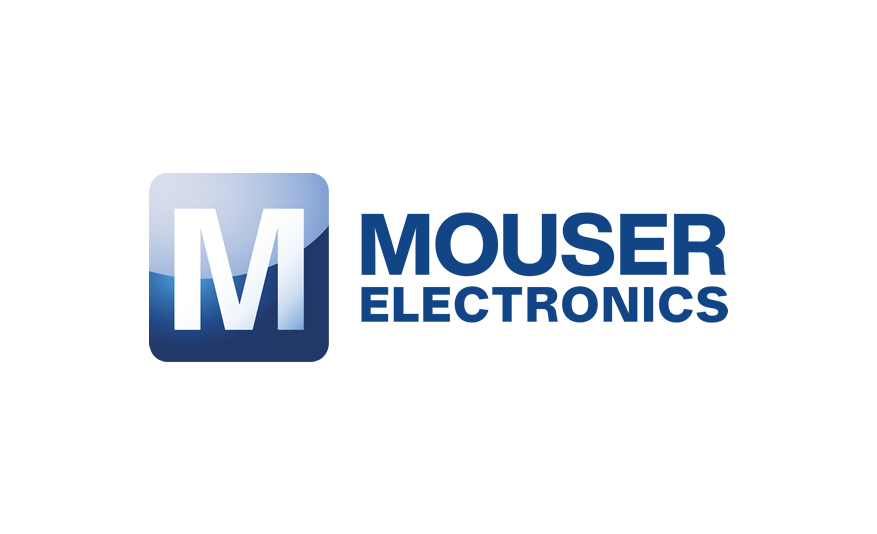The new V4M and V4H automotive computing SoCs target ADAS L2, L2+, and L3 while maintaining software compatibility with existing chips in the R-Car line.
Renesas has introduced new automotive system-on-chips (SoCs), the R-Car V4M and V4H, targeted at advanced driver-assistance (ADAS) L2, L2+, and L3 and automated driving (AD) systems.

Renesas optimized the SoCs for high tera operations per second per watt (TOPS/W). The company combined multiple accelerators and specialized cores to deliver AI deep learning for enhanced performance and functionality.
New Additions to the R-Car Family
The V4M is a new series outgrowth from earlier platforms, with the V4H-3 and V4H-5 joining the existing V4H-7. The V4H supports ADAS L2+ and L3, while the V4M addresses lower-cost L2 and L2+ ADAS applications. The two SoC lines are pin- and code-compatible.
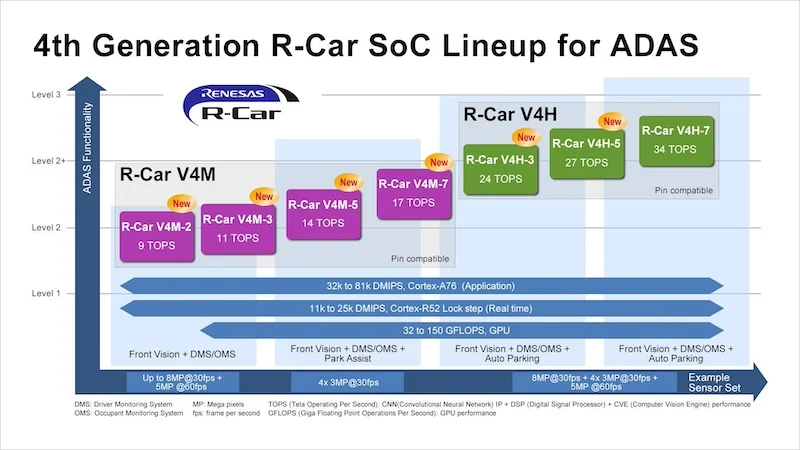
The V4M processors deliver up to 17 TOPS, and the V4H offers up to 34 TOPS out of multiple Arm Cortex A76 cores for high-speed processing and high-reliability image recognition. In addition, the chips contain Arm Cortex R52 cores to support Automotive Safety Integrity Level (ASIL)-D, real-time operations without external microcontrollers. ASIL-D is the highest-level classification of safety measures. It refers to systems designed to avoid potentially life-threatening malfunction risks. For example, ASIL-D safeguards against brake failure on all four wheels.
The SoCs contain dedicated processing modules, including an image signal processor, with parallel processing for human and machine vision. The SoCs also feature graphics processing and accelerators for computer vision and deep learning. Image renderers (IMRs) correct fisheye lens distortions. This combination allows AI processing to enhance key functionality, especially surrounding vision and image interpretation.
Key Features of the V4M and V4H
The V4M and V4H are built on Renesas’ 7-nm manufacturing process node and maintain package pin compatibility within the two series. The new SoCs are scalable and compatible across the R-Car product family and with Renesas' power management ICs (PMICs) and power transistors.
The heart of the processors is a multi-core configuration with up to four 64-bit Arm Cortex A76 cores at 1.8 GHz, delivering 81K DMIPS performance for application processing. Up to three Arm Cortex R52 cores at 1.4 GHz provide real-time operations at up to 25K DMIPS performance with ASIL-D compliance. The 3D AXM-8-256 GPU runs at 600 MHz to deliver over 150 GFLOPS.

The SoCs also support CAN, Ethernet AVB, TSN, and FlexRay automotive interfaces and include two fourth-generation PCIe interconnects with falt detection and response.
Software Reusability
The R-Car automotive SoCs add to Renesas' long history in the automotive market. The R-Car ecosystem covers most automotive computing needs, supporting system integrators, software tool vendors, and others in the R-Car consortium. The R-Car processors support software reusability across their product lines and ADAS levels.
Software reusability in automotive electronics is becoming increasingly important as cars rely on fast-changing electronics. The reuse enables code sharing among a wide variety of scalable systems. This reduces the burdens of software development and testing, speeds up time to market, and extends support windows.
Support and Availability
Renesas' development tools fully support the new chips. These tools include the recently released R-Car Open Access software-defined vehicle (SDV) platform, an out-of-the-box pre-validated solution for automotive functions such as ADAS, infotainment, and others. The new R-Car V4M and R-Car V4H devices are now available as samples to major automotive manufacturers and will reach shipping volumes in Q1 of 2026.
































